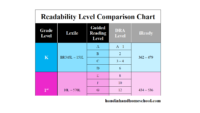Phonics is the 2nd step in the reading process. After children have developed Phonological Awareness, they are ready to connect that oral language skill to the written symbols – our alphabet – that make up words.
Look at any number of phonics programs and you will see there is no official order in which children are taught to read.
5 Steps to Learning to Read:
- Phonological Awareness
- Phonics
- Fluency
- Vocabulary Development
- Reading Comprehension

Ordinary Parents Guide to Teaching Reading, a popular phonics program written by The Well Trained Mind folks, begins teaching kids -at, -am, and -an words all in the same first lesson.
Phonics Pathways, on the other hand, jumps right in with transitioning from 2-letter sound combinations to reading lists of words, such as sat, set, sip, sob, and sun.
For yet another approach, Hooked on Phonics, introduces word families by immediately comparing and contrasting short-a and short-i words, such as -at, -ag, and -ig.
As you can see, there is no single agreed upon approach to what words you should teach a new reader first. However, if you plan to unschool phonics or create your own homeschool reading program, keep in minds a few basic phonics principles.
- Avoid introducing auditorily confusing sounds at the same time, like B and V or short-e and short-i
- Avoid introducing visually confusing letters at the same time, like b and d or p and q
- It’s good to add extra reinforcement of high utility letters such as F, M, N, R, and S
- Continuous sounds, like the ones listed here, are easier to learn as initial consonants:
/f/ – fat
/l/ – let
/m/ – mutt
/n/ – not/r/ – rat
/s/ – sad
/z/ – zoo
/sh/ – ship
Last modified on September 5, 2023




